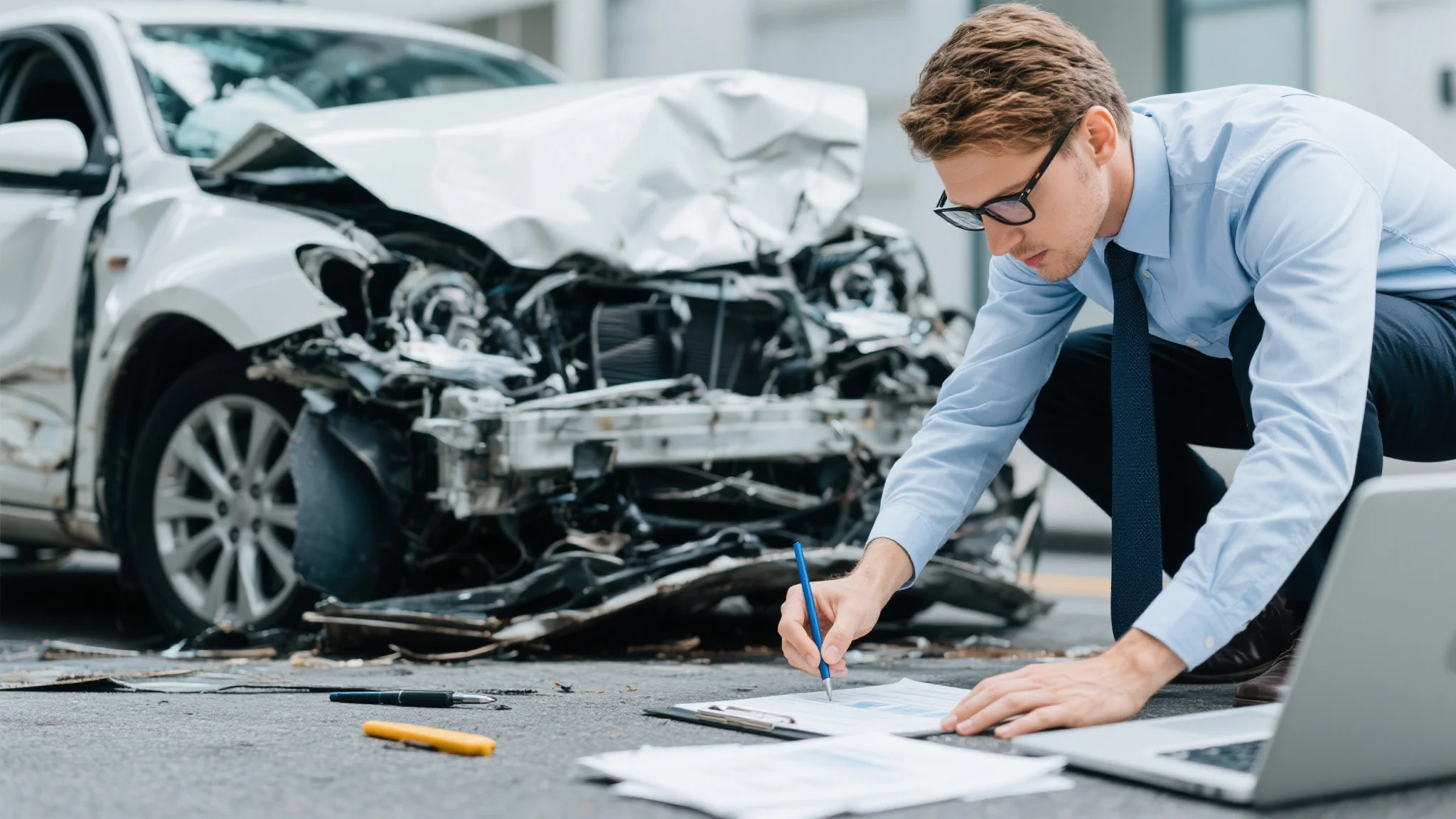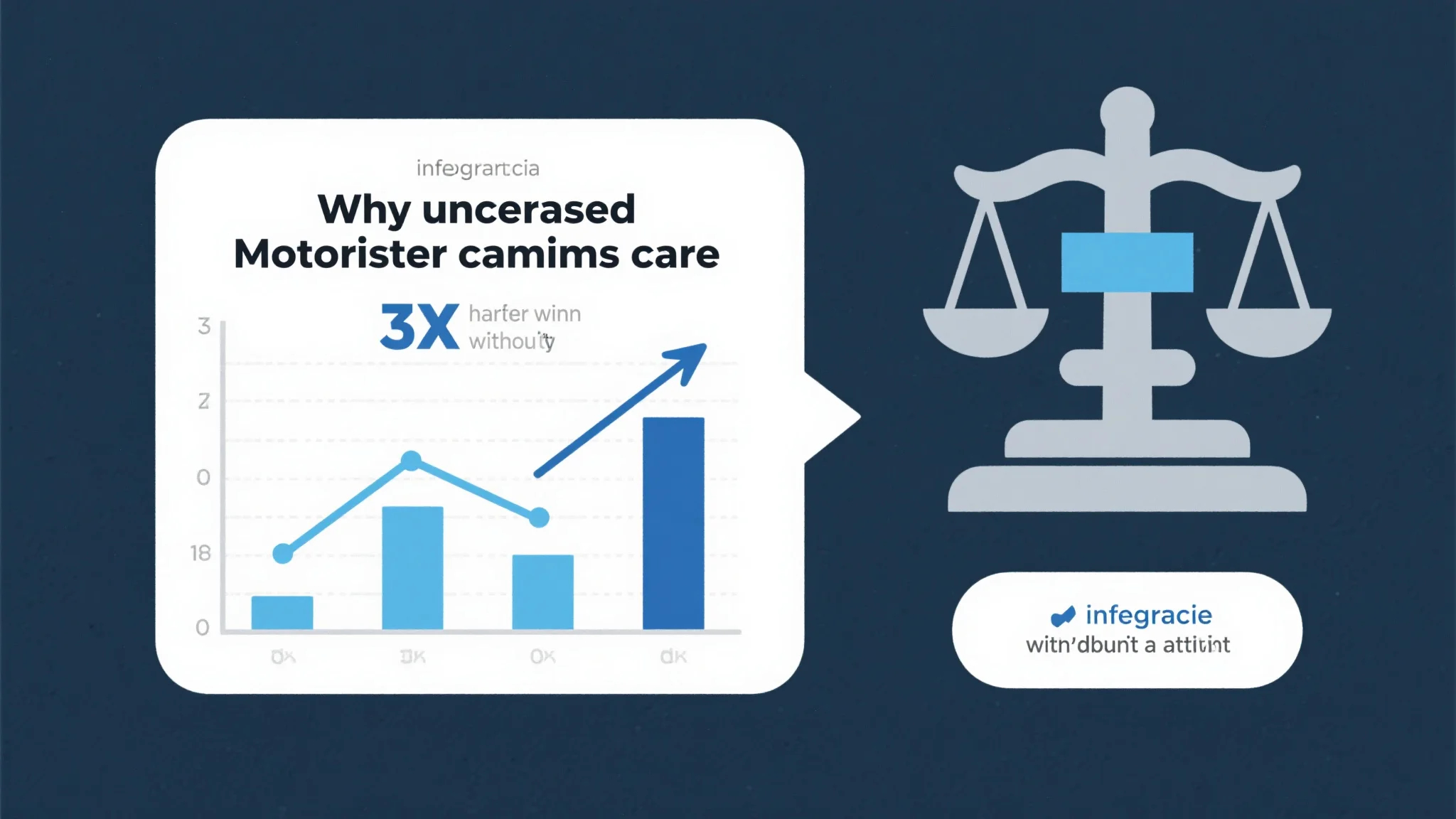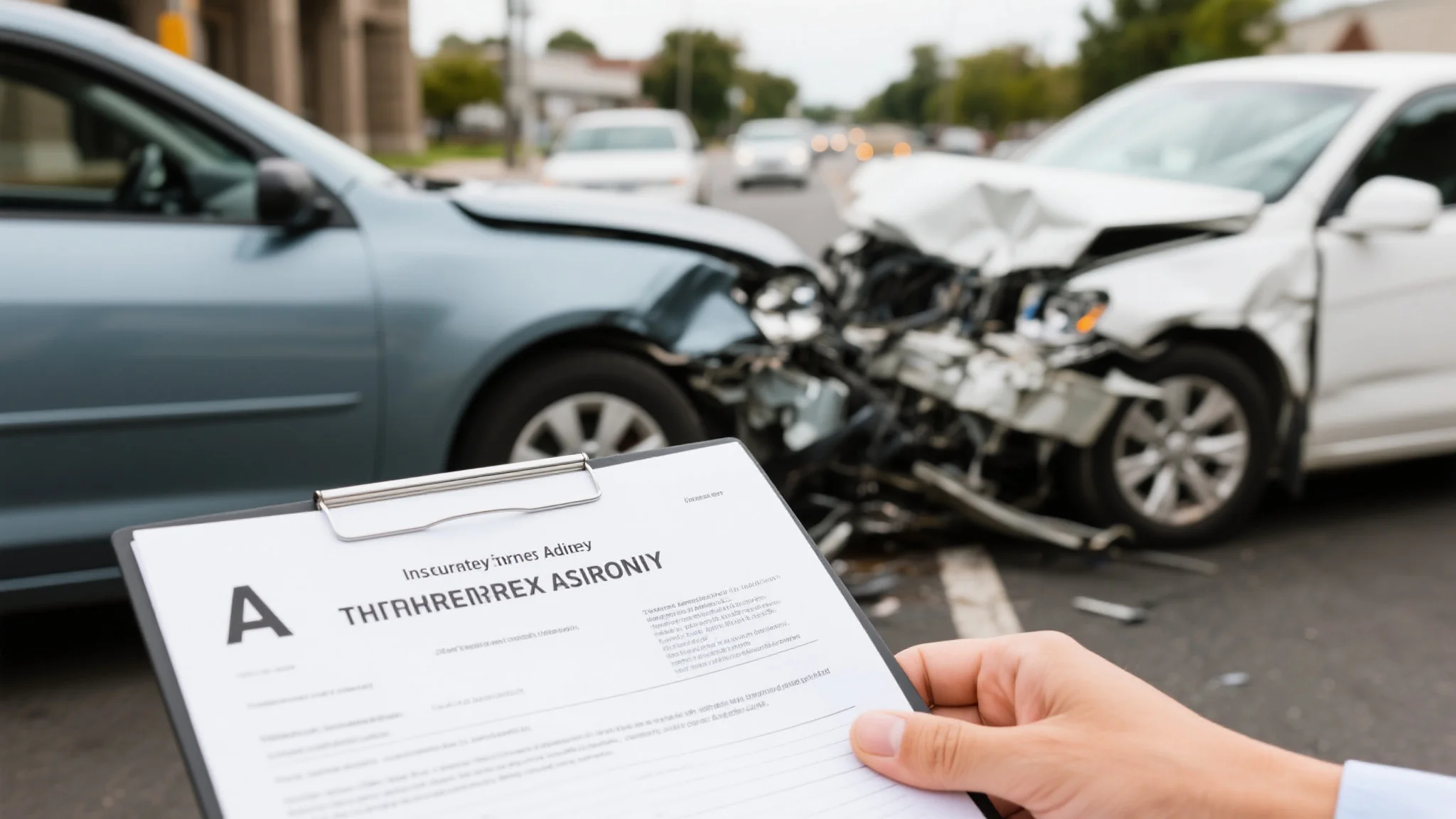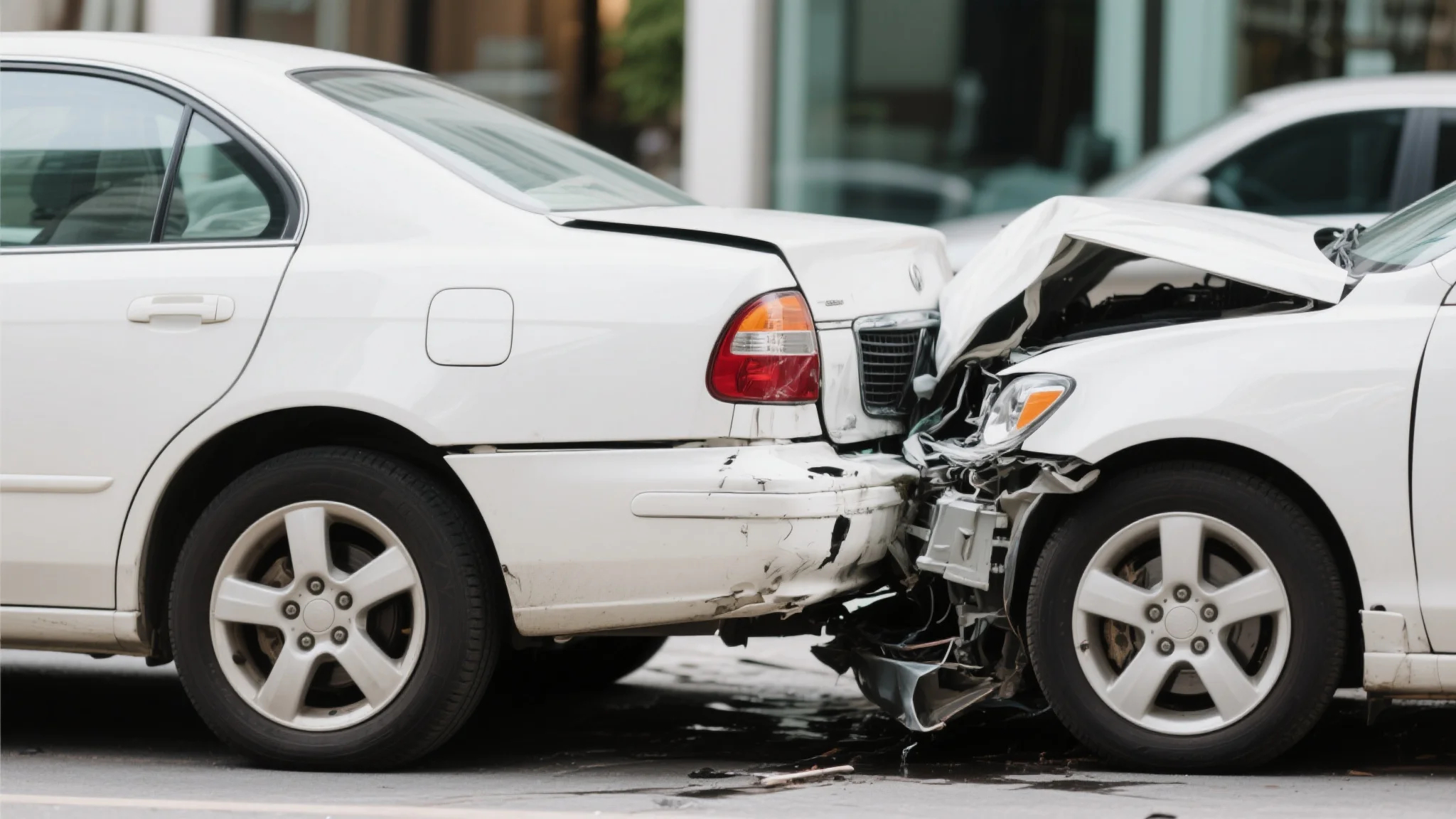When insurance companies face high-value claims following serious accidents, they deploy teams of adjusters, investigators, and legal experts to minimize their financial exposure. In this complex battlefield of evidence and liability, accident reconstruction specialists emerge as crucial allies for claimants seeking fair compensation. These forensic experts possess the technical expertise and scientific methodology necessary to uncover the truth behind complex vehicular incidents, transforming scattered debris and conflicting witness accounts into compelling evidence that can dramatically increase settlement values.
The significance of professional accident reconstruction cannot be overstated in today’s litigation environment. Insurance companies routinely invest substantial resources in their own reconstruction teams, understanding that controlling the narrative of how an accident occurred directly impacts their financial liability. When claimants lack access to equally qualified experts, they find themselves at a severe disadvantage, often accepting settlements that represent mere fractions of their actual damages. This disparity becomes particularly pronounced in cases involving catastrophic injuries, wrongful death, or complex multi-vehicle collisions where the stakes can reach millions of dollars.
Professional accident reconstructionists bring a unique combination of engineering expertise, physics knowledge, and investigative skills to each case. These specialists typically hold advanced degrees in mechanical engineering, physics, or related fields, with many possessing additional certifications from organizations such as the Accreditation Commission for Traffic Accident Reconstruction (ACTAR). Their training encompasses vehicle dynamics, biomechanics, roadway design, traffic signal timing, weather analysis, and human factors engineering. This comprehensive educational foundation enables them to analyze accidents from multiple perspectives, identifying critical factors that less qualified investigators might overlook.
The reconstruction process begins immediately after an accident occurs, though experts can still provide valuable insights months or even years later. Time-sensitive evidence collection represents one of the most critical aspects of their work. Tire marks fade, debris gets cleared, and physical evidence deteriorates with each passing day. Professional reconstructionists understand the urgency of preserving this evidence, often arriving at accident scenes within hours of notification. They photograph skid marks from multiple angles, measure their length and direction, document vehicle rest positions, and collect paint transfer samples that can reveal impact sequences.
Modern accident reconstruction relies heavily on sophisticated technology that transforms traditional investigative methods. Three-dimensional laser scanning creates precise digital models of accident scenes, capturing millions of data points that preserve the exact positions of vehicles, roadway features, and environmental factors. These scans prove invaluable when accidents occur on busy highways where traffic must be restored quickly, as they allow detailed analysis long after the scene has been cleared. Drone technology provides aerial perspectives that reveal traffic patterns, sight line obstructions, and roadway geometry that ground-level photography cannot capture.
Computer simulation software represents another revolutionary tool in the reconstructionist’s arsenal. Programs such as PC-Crash, HVE (Human Vehicle Environment), and MADYMO (Mathematical Dynamic Models) allow experts to recreate accidents virtually, testing various scenarios to determine which sequence of events best matches the physical evidence. These simulations can demonstrate how different factors—vehicle speeds, braking distances, steering inputs, or road conditions—would have affected the accident outcome. The visual nature of these presentations makes complex physics concepts accessible to judges and juries who lack technical backgrounds.
Vehicle data recorders, commonly known as “black boxes,” provide unprecedented insights into the moments leading up to an accident. Modern vehicles store information about speed, acceleration, braking, steering angle, and seatbelt usage in the seconds before impact. Extracting and interpreting this data requires specialized equipment and expertise that only qualified reconstructionists possess. This objective evidence often contradicts initial police reports or witness statements, revealing the true dynamics of an accident. In cases where fault determination significantly impacts settlement values, this data can shift liability assessments and dramatically increase compensation awards.
The biomechanical analysis component of accident reconstruction proves particularly valuable in high-value claims involving serious injuries. Reconstructionists work closely with medical experts to correlate accident forces with specific injury patterns, demonstrating how the physics of a collision caused particular medical conditions. This analysis becomes crucial when insurance companies argue that injuries resulted from pre-existing conditions rather than the accident itself. By calculating the precise forces experienced by occupants during impact, experts can establish clear causal relationships between the collision and resulting injuries.
Visibility analysis represents another specialized area where reconstruction experts provide invaluable insights. Many accidents occur during challenging visibility conditions—nighttime, fog, rain, or snow—where determining what drivers could or should have seen becomes critical to liability assessment. Reconstructionists use photometric analysis to calculate available light levels, considering factors such as headlight illumination patterns, street lighting, and atmospheric conditions. They can demonstrate whether a pedestrian would have been visible to an approaching driver or whether sight line obstructions prevented a motorist from seeing a stop sign or traffic signal.
The economic impact of professional accident reconstruction becomes apparent when comparing settlement outcomes in cases with and without expert involvement. Insurance companies understand that well-documented reconstruction reports significantly increase the likelihood of substantial jury verdicts, making them more willing to negotiate reasonable settlements rather than risk trial. Cases that might settle for hundreds of thousands of dollars without expert testimony often resolve for millions when supported by comprehensive reconstruction analysis. This dramatic difference reflects the power of scientific evidence to establish clear liability and demonstrate the full extent of damages.
The Science Behind Accident Reconstruction and Evidence Preservation
The foundation of effective accident reconstruction rests upon fundamental principles of physics, engineering, and forensic science that transform chaotic crash scenes into comprehensible sequences of events. Professional reconstructionists apply Newton’s laws of motion, conservation of momentum, and energy transfer principles to analyze how vehicles behaved before, during, and after impact. This scientific approach distinguishes qualified experts from investigators who rely primarily on witness statements and superficial observations, providing the objective foundation necessary to challenge insurance company narratives and secure appropriate compensation for injured parties.
Momentum analysis forms the cornerstone of most reconstruction efforts, as the conservation of momentum principle allows experts to calculate pre-impact speeds even when vehicles come to rest far from their collision points. By measuring vehicle weights, final rest positions, and damage patterns, reconstructionists can work backward through the collision sequence to determine the speed and direction of each vehicle at the moment of impact. This analysis proves particularly valuable when speed becomes a contentious issue, as insurance companies often argue that their insured drivers were traveling at or below posted speed limits to minimize liability exposure.
Energy analysis provides another powerful tool for understanding accident dynamics, particularly in cases involving significant property damage or catastrophic injuries. The kinetic energy possessed by moving vehicles must be dissipated during a collision through vehicle deformation, occupant movement, and heat generation. By analyzing crush patterns and measuring the extent of structural damage, experts can calculate the energy absorbed by each vehicle, providing insights into impact severity and occupant loading. This analysis becomes crucial when insurance companies attempt to minimize the severity of an accident to reduce injury claim values.
Tire mark analysis represents one of the most visible and compelling forms of physical evidence available to reconstruction experts. Different types of tire marks—acceleration marks, braking marks, yaw marks, and scuff marks—tell distinct stories about vehicle behavior leading up to an accident. Critical speed yaw marks, created when vehicles slide sideways while rotating, allow experts to calculate minimum speeds based on the radius of curvature and available friction. These calculations provide objective evidence that often contradicts driver statements about their pre-accident speeds, establishing clear liability in cases where fault determination affects settlement values.
The coefficient of friction between tires and roadway surfaces plays a crucial role in reconstruction calculations, as this value determines braking distances, cornering capabilities, and slide patterns. Professional reconstructionists conduct on-site friction testing using specialized equipment to measure actual surface conditions rather than relying on theoretical values from engineering handbooks. Weather conditions, road surface materials, tire conditions, and contamination from oil, water, or debris all affect friction coefficients, making site-specific testing essential for accurate analysis. Insurance companies often challenge reconstruction conclusions by arguing that experts used inappropriate friction values, making precise measurement critical for defending expert opinions.
Photogrammetry techniques allow reconstructionists to extract precise measurements from photographs taken at accident scenes, even when the photographers lacked surveying equipment or technical training. By identifying reference objects of known dimensions within photographs, experts can calculate distances, angles, and positions of vehicles and evidence markers. This capability proves invaluable when analyzing photographs taken by police officers, witnesses, or emergency responders who documented the scene before formal investigation began. The ability to extract accurate measurements from existing photographs often provides the only means of analyzing evidence that was subsequently disturbed or destroyed.
Vehicle damage analysis requires extensive knowledge of automotive engineering, materials science, and crash test data to interpret properly. Modern vehicles incorporate sophisticated energy management systems designed to protect occupants during collisions, including crumple zones, reinforcement structures, and airbag deployment systems. Understanding how these systems function and fail during real-world accidents allows reconstructionists to correlate damage patterns with impact forces and occupant loading. This analysis becomes particularly important when insurance companies argue that minimal vehicle damage indicates minor impact forces that could not have caused serious injuries.
The timing of various events during an accident sequence often determines liability allocation, making precise temporal analysis crucial for maximizing claim values. Reconstructionists analyze factors such as perception-reaction times, braking distances, and signal timing to establish whether drivers had adequate opportunity to avoid collisions. Traffic signal timing records, obtained from municipal authorities, can reveal whether signals were functioning properly and whether drivers had sufficient green time to complete their intended maneuvers. This analysis frequently reveals that accidents attributed to driver error actually resulted from inadequate signal timing or poor traffic engineering design.

Environmental factors significantly influence accident causation and reconstruction analysis, requiring experts to consider weather conditions, lighting, road surface conditions, and traffic patterns existing at the time of collision. Historical weather data from nearby monitoring stations provides objective information about temperature, humidity, wind speed, and precipitation that may have affected vehicle handling or driver visibility. Road surface conditions, including the presence of ice, water, oil, or debris, dramatically affect vehicle control and braking performance. Professional reconstructionists document these conditions through photographs, measurements, and material sampling when possible.
The integration of multiple data sources distinguishes professional reconstruction from superficial accident investigation. Expert testimony becomes most compelling when supported by consistent findings from physical evidence, vehicle data, witness statements, and environmental analysis. Reconstructionists must identify and resolve apparent contradictions between different evidence sources, explaining why certain witness observations may be inaccurate or why physical evidence suggests different conclusions than initial police reports. This comprehensive approach provides the foundation for expert opinions that can withstand aggressive cross-examination by defense attorneys representing insurance companies.
Quality assurance protocols ensure that reconstruction analysis meets scientific standards and can withstand legal scrutiny. Professional reconstructionists follow established methodologies, document their procedures thoroughly, and subject their conclusions to peer review when possible. They maintain detailed case files containing all measurements, calculations, photographs, and supporting documentation, allowing other experts to verify their work if necessary. This transparency distinguishes qualified experts from investigators who rely on intuition or experience rather than scientific methodology, providing the credibility necessary to influence settlement negotiations and jury verdicts.
The admissibility of reconstruction evidence in legal proceedings depends upon meeting established scientific standards, including the Daubert criteria used in federal courts and many state jurisdictions. These standards require that expert testimony be based on reliable scientific principles, that the methodology be generally accepted within the relevant scientific community, and that the expert be qualified to offer opinions in the specific area of expertise. Professional reconstructionists must demonstrate their qualifications through education, training, experience, and continuing education, while also showing that their analysis follows accepted scientific protocols.
Strategic Implementation and Maximizing Settlement Values Through Expert Analysis
The strategic deployment of accident reconstruction expertise requires careful coordination between legal counsel, insurance professionals, and technical experts to maximize claim values while minimizing litigation costs. Successful implementation begins with early case evaluation to identify accidents where reconstruction analysis can provide significant value, followed by prompt expert retention to preserve time-sensitive evidence and establish clear liability narratives. The investment in professional reconstruction services typically generates returns many times the initial cost, particularly in cases involving serious injuries, disputed liability, or high-value damages where insurance companies deploy their own expert teams to minimize settlement exposure.
Early expert involvement proves crucial for preserving evidence and establishing favorable case narratives before insurance companies can develop competing theories of accident causation. Professional reconstructionists understand that physical evidence deteriorates rapidly after accidents, with tire marks fading, debris being cleared, and vehicle damage being repaired or destroyed. Prompt expert retention allows for comprehensive scene documentation, vehicle inspection, and evidence preservation that may prove impossible to replicate weeks or months later. This early involvement also prevents insurance companies from controlling the investigation narrative, ensuring that claimants have access to objective analysis rather than relying solely on insurance company investigations designed to minimize liability exposure.
The selection of qualified reconstruction experts requires careful evaluation of credentials, experience, and specialization areas to ensure optimal case outcomes. Not all reconstruction experts possess equal qualifications or expertise in specific accident types, making expert selection a critical strategic decision. Complex cases involving commercial vehicles, motorcycles, pedestrian accidents, or unusual circumstances require specialists with relevant experience and training. Board certification through organizations such as ACTAR provides one measure of expert qualifications, while publication records, teaching experience, and courtroom testimony history offer additional indicators of expertise and credibility.
Cost-benefit analysis guides strategic decisions about expert retention, as reconstruction services represent significant investments that must be justified by potential settlement increases. Simple rear-end collisions with clear liability may not warrant extensive reconstruction analysis, while complex multi-vehicle accidents with disputed fault determination often justify substantial expert investment. The severity of injuries and potential damages also influences expert retention decisions, as cases involving catastrophic injuries or wrongful death typically justify comprehensive analysis regardless of liability clarity. Legal counsel must evaluate these factors carefully to ensure that expert costs enhance rather than diminish net recovery for their clients.
Collaborative relationships between reconstruction experts and medical professionals create powerful synergies that dramatically enhance claim values in serious injury cases. Biomechanical analysis correlating accident forces with specific injury patterns provides compelling evidence of causation that insurance companies find difficult to challenge. When reconstruction experts work closely with treating physicians, biomechanical engineers, and life care planners, they can demonstrate not only how accidents occurred but also how the resulting forces caused specific injuries and long-term disabilities. This integrated approach transforms technical accident analysis into compelling human stories that resonate with insurance adjusters, mediators, and juries.
The presentation of reconstruction findings requires careful consideration of audience sophistication and attention spans to maximize persuasive impact. Complex technical analysis must be translated into accessible narratives that non-technical audiences can understand and remember. Professional reconstructionists use computer animations, scale diagrams, and physical demonstrations to illustrate their findings, making abstract physics concepts tangible and memorable. The most effective presentations combine scientific rigor with clear communication, avoiding technical jargon while maintaining analytical precision. This balance proves crucial during settlement negotiations where insurance adjusters must understand and accept expert conclusions to authorize appropriate settlement values.
Timeline management becomes critical when coordinating reconstruction analysis with legal proceedings, medical treatment, and insurance negotiations. Expert analysis requires adequate time for thorough investigation, but legal deadlines and statute of limitations constraints may limit available timeframes. Professional reconstructionists must balance thoroughness with efficiency, prioritizing analysis elements that provide the greatest impact on case outcomes. Early identification of critical issues allows experts to focus their efforts on the most important aspects of each case, ensuring that limited time and resources generate maximum value for their clients.
The integration of reconstruction findings with other case evidence creates comprehensive liability narratives that insurance companies find difficult to challenge. Expert analysis must be consistent with witness statements, police reports, medical records, and other case evidence to maintain credibility and persuasive power. When reconstruction conclusions contradict other evidence sources, experts must provide clear explanations for these discrepancies, demonstrating why their scientific analysis provides more reliable information than subjective observations or incomplete investigations. This integration process often reveals weaknesses in insurance company positions while strengthening claimant arguments for maximum compensation.
Negotiation strategies must account for the psychological impact of professional reconstruction analysis on insurance company decision-making. Insurance adjusters and defense attorneys understand that well-documented expert analysis significantly increases the likelihood of substantial jury verdicts, making them more willing to negotiate reasonable settlements rather than risk trial exposure. The mere presence of qualified reconstruction experts often shifts negotiation dynamics, as insurance companies recognize the enhanced litigation risk associated with cases supported by credible scientific analysis. This psychological advantage can be leveraged to secure favorable settlements without the time and expense of formal litigation.
The documentation and preservation of expert work product ensures that reconstruction analysis maintains its value throughout extended litigation processes. Professional experts maintain detailed case files containing all measurements, calculations, photographs, and supporting materials, allowing their analysis to be verified, updated, or defended years after the initial investigation. This documentation proves crucial when cases proceed to trial, as experts must be able to explain and defend their methodologies under aggressive cross-examination. Thorough documentation also facilitates collaboration with other experts and allows for case analysis updates when new evidence becomes available.
Quality control measures ensure that reconstruction analysis meets professional standards and can withstand legal scrutiny throughout the litigation process. Peer review by other qualified experts provides independent verification of methodologies and conclusions, while continuing education ensures that experts remain current with evolving technology and analytical techniques. Professional reconstructionists must also maintain appropriate insurance coverage and follow ethical guidelines established by professional organizations, protecting both themselves and their clients from potential liability exposure. These quality assurance measures distinguish professional experts from less qualified investigators, providing the credibility necessary to influence case outcomes.
The long-term value of reconstruction expertise extends beyond individual case outcomes to establish precedents and relationships that benefit future claims. Insurance companies maintain detailed records of expert performance and case outcomes, adjusting their settlement strategies based on past experiences with specific experts and law firms. Successful reconstruction analysis in high-profile cases creates reputational advantages that facilitate favorable settlements in subsequent matters, as insurance companies recognize the litigation risks associated with challenging well-established expert credentials. This cumulative effect makes the strategic use of reconstruction expertise an investment in long-term practice success rather than simply a case-specific expense.
The evolution of reconstruction technology continues to enhance the value and effectiveness of expert analysis, with emerging tools providing unprecedented insights into accident causation and injury mechanisms. Advanced simulation software, improved data collection methods, and enhanced visualization techniques allow experts to present their findings with greater clarity and persuasive impact. Staying current with these technological developments requires ongoing investment in training and equipment, but the competitive advantages gained through superior analytical capabilities justify these costs through improved case outcomes and enhanced expert credibility. As insurance companies also adopt new technologies, maintaining technological parity becomes essential for effective advocacy on behalf of injured claimants.



